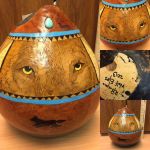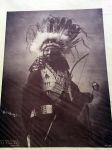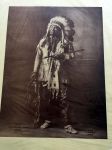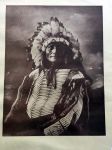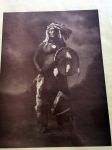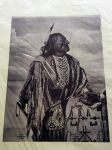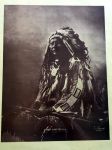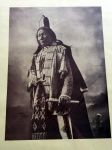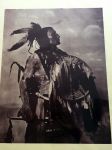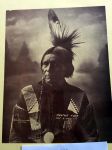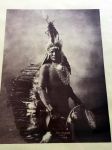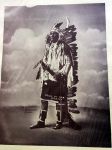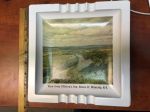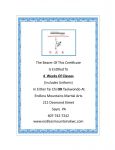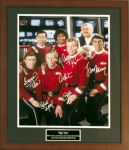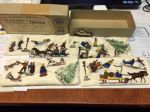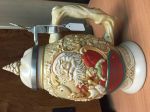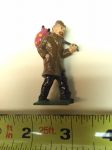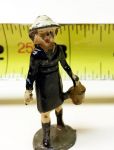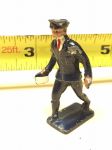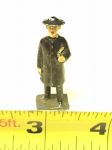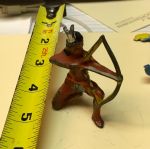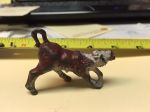CHIEF RED SHIRT (Ogle Sha), Oglala Lakota, 1898, by F.A. Rinehart. “Cheyenne / Chief Red Shirt / 19 inches wide by 24.5 inches high / Rinehart, The identification, apparently added by Rinehart, himself, after the departure of Adolph Muhr, is typically inaccurate. Red Shirt was not “Cheyenne,” but a leading chief of the Oyuhpe band of the Oglala Lakota at Pine Ridge Reservation, S.D.
The Ulysses S. Grant peace medal he wears was presented to his father Red Dog when he first visited the president in 1870.During the initial, ground-breaking European tour of Buffalo Bill's Wild West, in 1887-88, Red Shirt was the “leading chief” and star of the production, co-billed on the advertisements with William F. Cody, himself. In London, Queen Victoria consented to end a quarter-century of mourning for her late consort Prince Albert, in order to attend a command performance of the Wild West. After two, rousing hours, Victoria asked to be introduced to Red Shirt. In her diary, the queen recorded that when the chief shook her hand he said that he had come thousands of miles to see her, and “now my heart is glad.” To Cody, she remarked, “I know a real prince when I see one” (Col. William F. Cody. Life and Adventures of Buffalo Bill. Chicago: John R. Stanton Cp., 1917). Engraved depictions of the exchange between Red Shirt and the queen appeared in the Illustrated London News and other publications. Reporters followed the Indian cast members everywhere, like paparazzi of a later day. Studio photos of Red Shirt, his wife and their six-year-old daughter sold by the thousands.The high plateau of the Pine Ridge Reservation, Red Shirt Table, is named in his honor.
The Indian Congress occurred from August 4 to October 31, 1898 in Omaha, Nebraska, in conjunction with the Trans-Mississippi International Exposition. Occurring within a decade of the end of the Indian Wars, the Indian Congress was the largest gathering of American Indian tribes of its kind to that date.[1] Over 500 members of 35 different tribes attended, including the Apache chief Geronimo, who was being held at Fort Sill as a United States prisoner of war.
Frank A. Rinehart's photographs of the Indian Congress participants are regarded as one of the best photographic documentations of American Indian leaders around the start of the 20th century.
Donated by Les Rolfe.



